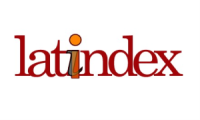Investigative analysis of selected FSO models with varying wavelengths for tropical weather
Abstract
In this paper, an investigation of some selected Mie and geometric Scattering models for free space optical (FSO) communication was done on available atmospheric data in Nigeria. The Kim and Kruse models have been established for the temperate region. In this work, the models were examined using the visibility data from the year 2008 to 2019. The models were examined under the 2% and 5% transmission threshold and under the wavelengths 780nm, 850nm, 1100nm, and 1550nm. The results indicates a higher attenuation at 780nm, supporting what is available in literature. The Suriza et al, ITU-R(Carbonneau) and Gailani et al models were investigated using the rain intensity data. The Suriza et al model indicates a reduced attenuation compared to the other two models.
Downloads
References
H, Henniger, and O. Wilfert, “An Introduction to Free-space Optical Communications,” RadioEngineering, vol.19 no 2, 2010.
Z. Ghassemlooy, and W. O. Popoola, “Terrestrial free-space optical communications,” InTech, pp. 355-392, 2010
A.G. Alkholidi, and K. S. Altowij, “Free space optical communications—Theory and practices” In Contemporary Issues in Wireless Communications. InTech., 2014
H. Kaushal, V.K. Jain, and S. Kar, “Free space optical communication,” Springer India, 2017.
M.A. Khalighi, and M. Uysal, “Survey on free space optical communication: A communication theory perspective,” IEEE Communications Surveys & Tutorials, vol. 16 no 4, pp. 2231-2258, 2014.
H. Willebrand, and B.S. Ghuman” Free space optics: enabling optical connectivity in today's networks”. SAMS publishing, Indiana, 2002.
K. Anbarasi, C. Hemanth, and R.G. Sangeetha, “A review on channel models in free space optical communication systems,” Optics and Laser Technology, vol. 97, pp.161-171, 2017.
A. Malik, and P. Singh, “Free space optics: current applications and future challenges,” International Journal of Optics, Hindawi Publishing Corporation, 2015.
E. J. McCartney, “Optics of the atmosphere: scattering by molecules and particles,” John Wiley and Sons, Inc., New York, 1976.
I. I. Kim, B. McArthur, and E. J. Korevaar, “Comparison of laser beam propagation at 785 nm and 1550 nm in fog and haze for optical wireless communications,” In Optical Wireless Communications III International Society for Optics and Photonics, vol. 4214, pp. 26-38, 2001.
H. Kaushal, and G. Kaddoum, “Optical communication in space: Challenges and mitigation techniques,” IEEE communications surveys & tutorials, vol.19 no.1, pp. 57-96, 2017.
S. S. Muhammad, B. Flecker, E. Leitgeb, and M. Gebhart. “Characterization of fog attenuation in terrestrial free space optical links,” Optical engineering, vol. 46 no. 6, 2007.
M. Ijaz, Z. Ghassemlooy, H. Le-minh, S. Zvanovec, J. Perez, J. Pesek, and O. Fiser, “Experimental validation of fog models for FSO under laboratory controlled conditions”. IEEE Personal Indoor and Mobile Radio Communication, pp. 19-23, 2013.
A. Z. Suriza, I. M. Rafiqul, A. K. Wajdi, and A. W. Naji, “Proposed parameters of specific rain attenuation prediction for free space optics link operating in tropical region”. Journal of Atmospheric and Solar-Terrestrial Physics, vol 94, pp.93-99, 2013.
S. A. Al-Gailani, A.B. Mohammad, U.U. Sheikh, and R. Q. Shaddad, “Determination of rain attenuation parameters for free space optical link in tropical rain”. Optik, 125(4), pp.1575-1578, 2014.
S. A, Zabidi, M. R., Islam, W, Al-Khateeb, and A. W. Naji. “Analysis of rain effects on terrestrial free space optics based on data measured in tropical climate”. IIUM Engineering Journal, vol.12 no. 5, 2012.
Copyright (c) 2023 ITEGAM-JETIA

This work is licensed under a Creative Commons Attribution 4.0 International License.











